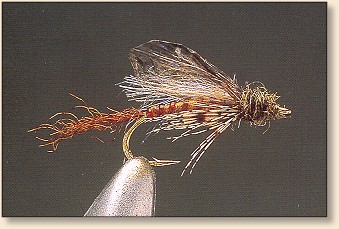Green Drake Emerger
By Shane Stalcup
Out West where the Rockies reach to the heavens,
a midsummer mayfly hatch occurs warranting just as
much admiration. The Green Drake is a big fly by
all standards. Colorado is not the only place these
insects are found, you will find them on the Henry's
Fork in Idaho as well as the Metolius River in Oregon,
where by videos were filmed.
The Green Drakes in the Frying Pan River are different
from the others. Whe it first hatches, the process takes
place at the bottom of the stream, out of sight of the
angler. This doesn't happen in every instance but
nevertheless this possibility shoud be kept in mind.
Once again, knowing something about the actual insect
can increase your success and put you that much more
ahead of the game. When the Drake hatches, it pulls free
from its shuck and swims to the surface. Fish key in on
this journey and ignore all else. The large wings are
laid back over its pale body giving off a silvery, glistening
effect. This look can be achieved with Medallion sheeting
and Ice Dubbing for the wing. This is probably the most
eye-catching - and therefore fish-attracting - feature of
the fly. Using synthetic materials provides a more translucent
effect. Natural materials fall short.
Any newly hatched insect is pale and drab in comparison to
its adult colors. When choosing a material for the body, keep
this in mind. Keep in mind too, the material will darken when
it gets wet. If you use white floss, any color can be applied
with a Chartpak marker.
The ribbing, which is very pronounced on the Green Drake, requires
special attention too. Generally, the segmentations or ribbings
are a brownish color, the ones on the Flying Pan lean towards rust.
Placing rust-colored tubing over the floss body gives a very
realistic appearance. This is even more evident when the body
becomes wet.
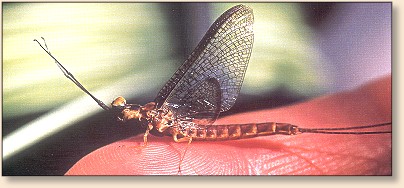
Materials List:
Hook: Targus 2312 or equivalent size 10 - 14.
Thread: Match the color of the body.
Shuck: Z-lon.
Body: Single-strand white floss colored with a Chartpak
marker, celery or pale olive.
Ribbing: Micro tubing.
Underwing: Ice Dubbing.
Wing: Medallion sheeting.
Thorax: Awesome Possum dubbing.
Legs: Partridge.
Instructions - Green Drake Emerger:
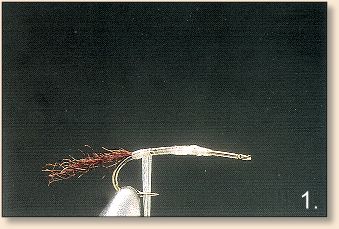
1. Tie in several strands of Z-lon so that it extends
out the back of the fly for the shuck.
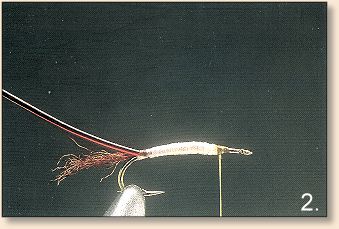
2. Tie in the tubing for the dubbing and form a tapered
body with the floss. The body should end about 1/4 of the
way back from the hook eye.
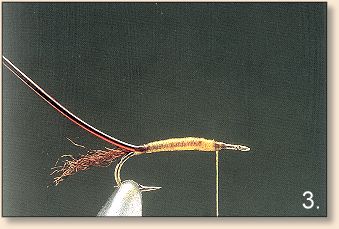
3. Color the body with the Chartpak marker. The longer
you go over the body with the marker, the darker it will
get.
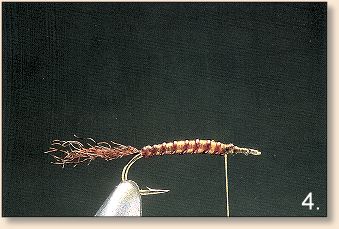
4. Rib the body with the tubing. The greater you stretch
the tubing, the more translucent it will become.
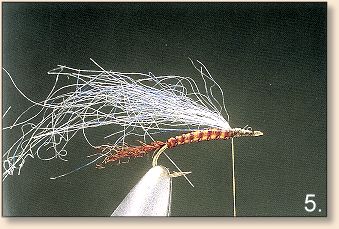
5. Tie in some Ice Dubbing for the underwing.
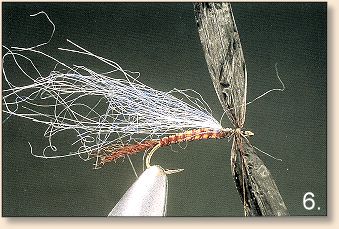
6. Cut a strip of the sheeting to the width you want your
wings to be, then tie them in behind the hook eye.
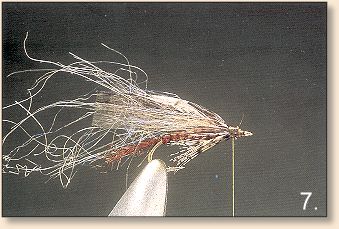
7. Pull the wings back along the sides of the thorax
and tie them down. Tie in some partridge for the legs
so that they are on the underside of the fly.
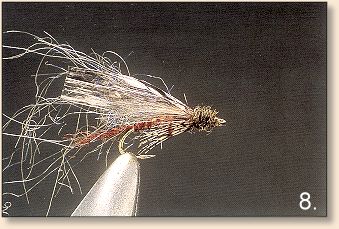
8. Dub the head.
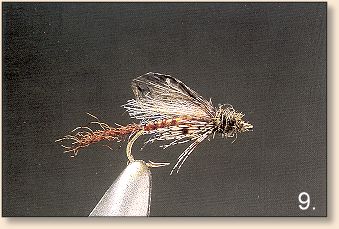
9. Trim the wings to shape. The Drake's wing
length is longer than usual so make them the length
of the body or just a little longer.
How to Fish the Fly:
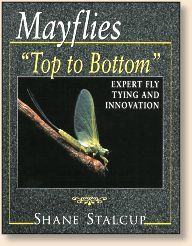
-
Fish the Green Drake Emerger in the same manner you would fish
any emerger, placing floatant on it and fishing it in the film.
However, since this fly can also emerge at the streams bottom,
you can try another approach. This emerger can be fished like
a traditional wet fly or even a nymph with added weight place on
the leader. When using weight, as the fly tumbles along the bottom
of the river, swim the fly to the surface in the same manner you
would a caddis pattern. With a mouthful of this fly passing by
a hungry fish, the results can be amazing. ~ Shane Stalcup
Credits: This fly is an excerpt from Mayflies "Top to
Bottom" by Shane Stalcup, published by Frank Amato Publications.
There is a review of this book in
A Fly Fisher's Library by Stu Farnham.
|

